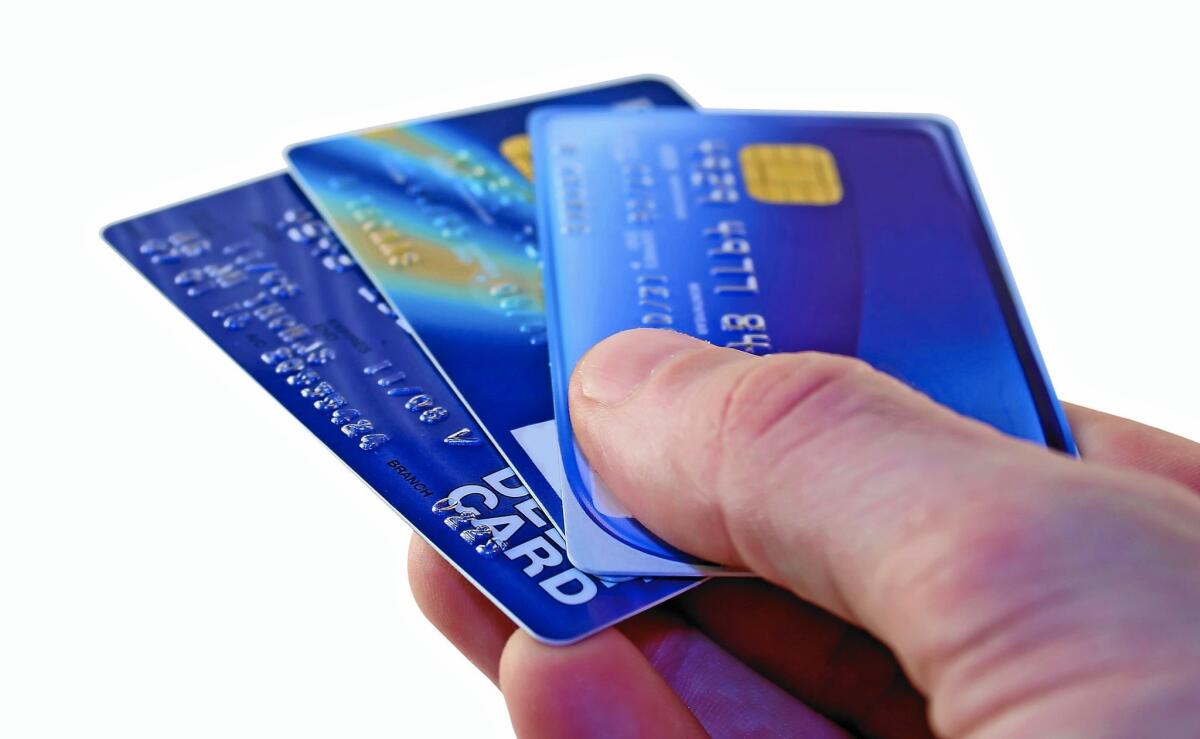Credit card exchange rate? Don’t worry. Foreign transaction fees? Worry

- Share via
Question: Ever since my Chase card removed foreign transaction fees, the cynic in me has wondered whether it didn’t just adjust the currency conversion rate to cover at least part of the lost fees. Should I be concerned about that?
Jack Jackson
Los Angeles
Answer: You could be, but as your later calculations show, and experts agree, this issue shouldn’t keep you up at night. Other issues should, and we’ll get to those in a minute.
First, though, let’s see how your card sets its currency exchange rate. A Chase representative referred me to its terms and conditions:
“If a transaction is in a foreign currency, Visa International or MasterCard International will convert the transaction into U.S. dollars using their own currency conversion procedures, and then will send us the transaction amount.
“The exchange rate will be determined using either the range of rates available in the wholesale currency markets for the processing date (which may be different from the rate the card association receives) or a government-mandated rate in effect on that date. The exchange rate used by Visa or MasterCard may differ from the rate on the date of your transaction.”
Kevin Yuann, director of credit cards for NerdWallet, a personal finance website, said the credit card network (Visa or MasterCard) “may be making some money but not an enormous amount of profit.”
Jackson’s math seems to bear this out. In July he charged a 21-euro purchase to his Chase card. The Chase exchange rate was 1.365238095. Using the website Oanda.com, he found the rate at 1.364, “which is close enough to it so it looks like Chase truly is giving the real exchange rate.”
In other words, the difference in his charge, had the Oanda rate been used, would have been 3 cents. In the world of high finance, that may add up, but for most travelers, it’s not enough to derail a vacation abroad.
If you still have concerns, read your credit card’s terms and conditions. I just did, and I’ll sleep just fine.
What will keep me awake are foreign transaction fees, which we’ve talked about, but I want to continue to emphasize because they can take a bite out of your vacation dollars.
If you don’t have a no-fee card, you’re probably paying 1% to 4% for every transaction you charge. Cards that don’t charge them are basically subsidizing the fees that they pay for cross-border transactions, Yuann said. They’re banking on the notion that your business will make their subsidy a wash.
You can find information on no-fee cards on the NerdWallet website at bit.ly/14YpGiV. You can filter cards to find a no transaction fee card through CardHub at lat.ms/1x9XcTe.
For a little light bedtime reading that may cause bad dreams, see CardHub’s May study of foreign transaction fees at lat.ms/1vGphls. One of its major findings? “On average, the cheapest way to convert currency is to do so automatically with a no foreign transaction fee credit card or a no foreign fee debit card on the Visa or MasterCard network.”
Under the “Tips for International Travelers” section, it noted: “It’s common for international travelers, especially first-timers, not to feel ready to leave until they’ve got some of the hard currency used in their destination country. It’s just one of those things that’s traditionally been recommended.
“But with the banking system becoming increasingly digital, it makes sense for the easiest way to buy things in a foreign currency to be with plastic.”
Next week we’ll tell the tale of a traveler whose plastic failed her — and talk about options travelers have to deal with that nightmare.
Have a travel dilemma? Write to [email protected]. We regret we cannot answer every inquiry.
More to Read
Sign up for The Wild
We’ll help you find the best places to hike, bike and run, as well as the perfect silent spots for meditation and yoga.
You may occasionally receive promotional content from the Los Angeles Times.







